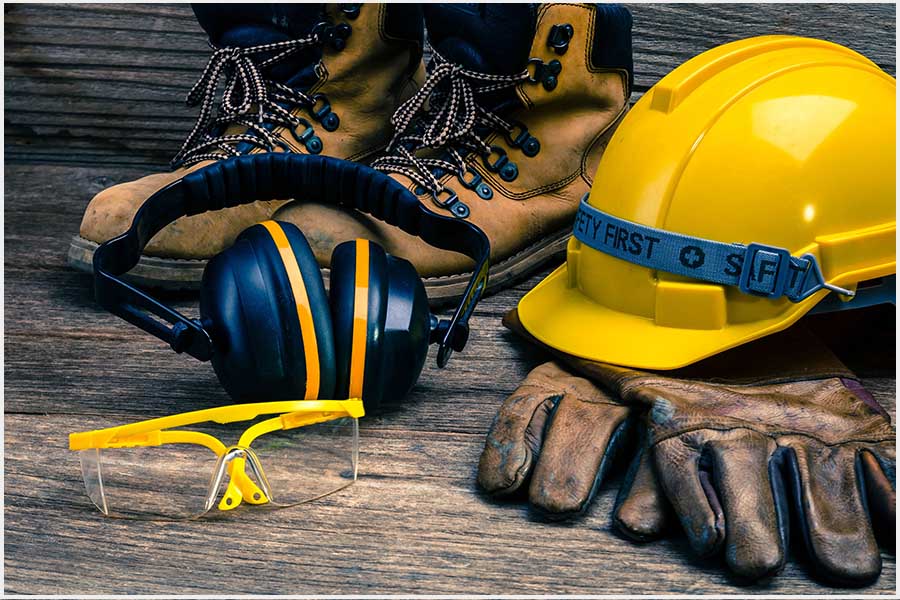Anyone involved in the UK construction industry would say ensuring the safety of their workers tops their list of priorities.
Yet despite policies designed to protect staff, dozens of people die in accidents on UK construction sites every year. According to the Health & Safety Executive (HSE), in 2020-21, 39 construction workers were killed at work vs. an annual average of 36 fatalities for the period 2016-17 and 2020-21.
Half of the 2020-21 fatalities involved a fall from height, 13% from being trapped by something or something falling on them, 11% by a falling object, 10% by a moving vehicle and 4% by contact with moving machinery.
Preventing accidents and maintaining safety on construction sites is the responsibility of a number of duty holders, whose activities are regulated by the Construction (Design and Management) (CDM) Regulations.
The regulations were introduced in 1994 following publication of a European Directive 92/57/EEC on minimum safety and health standards for temporary or mobile construction sites. The 1994 CDM regulations were revised in 2007 and again in April 2015.
The current CDM regulations explained
The CDM Regulations effectively cover all the responsibilities and duties of those involved in a construction project—duty holders—who range from clients to designers, principal designers, contractors and principal contractors, as well as workers themselves, to ensure work on a building site is carried out safely.
According to the HSE, the key elements to securing construction health and safety include “managing the risks by applying the general principles of prevention,” which require that duty holders involved in construction activity “avoid risks where possible, evaluate those risks that cannot be avoided, and put in place proportionate measures that control them at source.”
Other key elements, according to the HSE, cover “appointing the right people and organisations at the right time, and making sure everyone has the information, instruction, training and supervision they need to carry out their jobs in a way that secures health and safety.”
Also covered are “duty holders cooperating and communicating with each other and coordinating their work, and consulting workers and engaging with them to promote and develop effective measures to secure health, safety and welfare.”
Who does what?
The responsibilities of the various duty holders have been summarised in the CDM 2015 regulations, as per the HSE.
Clients: manage a project and ensure other duty holders are appointed; that sufficient time and resources have been allocated; relevant information is prepared and provided to other duty holders; the principal designer and principal contractor carry out their duties; and welfare facilities are provided.
Designers: When preparing or modifying designs, to eliminate, reduce or control foreseeable risks that may arise during construction; and the maintenance and use of a building once it is built. Designers are also expected to provide information to other members of the project team “to help them fulfil their duties.”
Contractors: Plan, manage and monitor construction work under their control so it is carried out without risks to health and safety. For projects involving more than one contractor, they must coordinate their activities with others in the project team; for single-contractor projects, they should prepare a construction phase plan.
Workers: must be consulted about matters that affect their health, safety and welfare. They must take care of their own health and safety as well as others who may be affected by their actions and report anything that is likely to endanger either their own or others’ health and safety.
In addition, principal designers prepare and provide relevant information to other duty holders, along with relevant information to the principal contractor to help them plan, manage, monitor and coordinate health and safety in the construction phase.
Principal contractors plan, manage, monitor and coordinate health and safety in the pre-construction phase of a project. They also liaise with the client and principal designer and organise cooperation between contractors—where there are more than one—and coordinate their work.
Notifying the HSE
If a construction project is expected to last longer than 30 working days and have more than 20 workers working at the same time at any point on the project—or exceed 500 person days—the client or their representative has to notify the HSE using an F10 form. The F10 form requires basic information including the site’s location, the relevant local authority, the nature of the project, its planned duration, the number of workers that will be required and the contact details for the principal contractor, designer and client.
The documentation should also include a start date, although it does not have to state when the scheme is expected to be finished. According to the CDM 2015 regulations, “where a project is notifiable, the client must give notice in writing to the [HSE] as soon as is practicable before the construction phase begins.”
Spelling out responsibilities
There are a series of documentation phases embedded in the CDM 2015 regulations: a pre-construction plan, a construction phase plan, together with paperwork covering health and safety.
According to regulation 4(4), pre-construction information must be provided by a project’s client “as soon as is practicable to every designer and contractor appointed, or being considered for appointment, to the project.”
Then there is the construction phase plan, which would include things like site rules, an overview of production schedule and access information. The onus falls on the client to prepare a construction phase plan for the project before the construction phase begins, setting out the health and safety arrangements, site rules and specific measures concerning any work involving the particular risks listed in Schedule 3 of CDM 2015.
If a project involves only one contractor, it is their responsibility to ensure the plan is drawn up. For those schemes involving more than one contractor, it is the principal contractor’s duty to deal with the construction phase documentation.
Regarding the health and safety file, according to the HSE, it is designed to “ensure that, at the end of the project, the client has information that anyone carrying out subsequent construction work on the building will need to know about in order to be able to plan and carry out the work safely and without risks to health.”
Where a project involves more than one contractor, the client instructs the principal designer to prepare the health and safety file.
Keep communication channels open
It is vitally important that all parties involved in a construction project, however complex or straightforward, maintain good channels of communication for the duration of the work.
Software tools, like Bluebeam Revu, enable teams to stay in touch, collaborate and keep up with developments across a particular scheme, regardless of where they are in the world.











